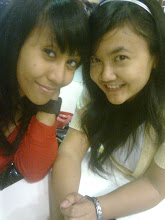Behind the music : the creation of Indonesian first concert hall
The establishment of Indonesia’s first concert hall, Aula Simfonia Jakarta, marked the fulfillment of a life-long dream for prominent artistic director and principal conductor of the Jakarta Oratorio Society Dr Stephen Tong and Aula Simfonia Jakarta project director Alwi Sjaal.
“When Dr. Tong came to me and said, ‘Alwi, we’re going to build a concert hall’, to me it was like lightning struck in front of my face,” Alwi said.
“I’ve studied in Germany, I’ve been to Europe and I always go back there to see concerts. So while my dream has not been as long as Stephen Tong’s, I always thought that one day we should have a concert hall in Indonesia,” he said.
The movement for a concert hall in Jakarta, in Kemayoran, Central Java, was first realized by Dr Tong approximately 50 years ago.
“Because Dr Tong was a classical music lover and he used to conduct several oratorio and simfonia, he always wished that one day Indonesia could have a concert hall. But up until this moment nothing has been built and no other businessmen or the Government have paid attention to a cultural problem like a concert hall,” Alwi said.
“So he thought we should do it because a nation or a city like Jakarta needs a concert hall, not only as a place we can be proud of, but as a place we can educate people and present good music to the people.”
The Rp 100 billion concert hall is built on a 1200sqm property in Kemayoran, Central Jakarta. The property is part of the Reformed Millennium Centre of Indonesia, which includes the Messiah Cathedral that was also designed by Dr Tong.
The concert hall was financially supported by public donations and by music lovers who believed the project was a worthy cause.
Construction on the six-storey building began in 2006 and the interior was completed in October last year.
Alwi said the most creative part of the hall was the way it was designed to emphasize the acoustics and prevent other noises overpowering the orchestra.
The ceiling consists of three layers with the air-conditioning placed in the top part to reduce the sound of it echoing in the hall.
The notches in the walls, where the statues are placed, also act as an acoustic feature with the sound flowing into them and bouncing back to the audience resulting in a ‘beautifully acoustic sound’.
“These were all part of the plans of Dr Tong. We didn’t use any acoustic consultant like other symphony concert halls around the world because we simply did not have the budget,” Alwi said.
Alwi was also heavily involved in the interior design of the building.
“When we started to discuss the style of the design, as a young architect, I immediately said we should use a contemporary style for this concert hall since it was built in this century. But Dr Tong is a more traditional person and he always thought that the classical music would relate better with a classical design,” he added.
They worked with an artist in Yogyakarta to create the Greek-style golden statues which surround the auditorium.
“I went there [to Yogyakarta] almost every week to advice on corrections regarding the posture, the movement, the musical instruments they were holding, the expressions on their faces, how the garments had to be folded, everything. We discussed all kinds of things throughout the production. It was very interesting,” Alwi said.
The layout of the hall reinforces the desire to provide an intimate setting between musicians and concert-goers. The 1200 seats are dispersed right around the stage so that an estimated 97 percent of concert-goers can see all the performers.
“We are not 100 percent perfect but we have tried to learn from the other concert halls and tried to build one with a low budget using our own effort but with better quality,” Alwi said.
The core musical feature of the concert hall is a 1962 Cassavant organ purchased from a church in America. The 3,217 piped organ weighs more than 10 metric tons and cost US$400,000 to have it shipped to Jakarta and reconditioned. Lina Runtuwene was the first person to play it during the inauguration concert in October 2009.
The classical music performances are already proving popular among Jakartans, with 85 percent of the seats being occupied at the inauguration concert, and 95 percent at the Christmas concert.
In preparing the year’s concert schedule, Alwi consulted with concert-goers as to how often people would pay to go to a classical concert.
It was decided to hold a concert once a month but as the knowledge of a concert hall in Jakarta has spread, more and more musicians are requesting the opportunity to perform there.
“We may have to have two or three concerts a month because the demand is there,” he said.
It is hoped that cheap children’s concerts will be performed to give children the opportunity to experience and appreciate classical music at a young age. However, it’s not only the children they hope to educate in the ways of classical music.
The staff of Aula Simfonia Jakarta have also found themselves teaching older concert-goers the codes of etiquette in a ‘professional concert’ situation.
“You should not come late and if you come late you are not allowed in. I say to my staff, if people get mad, let them get mad because internationally, when a concert begins nobody is allowed to go in. Using a mobile phone, drinking aqua, eating sweets, the way they dress, everything. We really have to make a big effort to educate about this etiquette,” Alwi said.
“It’s not easy, but it’s something we have got to do.”
from : garuda magazine
Jumat, 09 April 2010
Langganan:
Posting Komentar (Atom)

Tidak ada komentar:
Posting Komentar